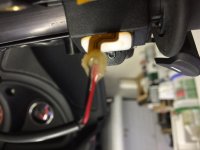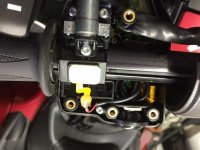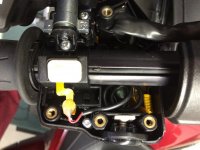SpyderCruiser
New member
My wife has recently bought a Spyder, so I am thinking about how to hook her up with CB so she can talk to me on my GoldWing. I will no doubt create a system for her using a Midland CB and an Autocom, as I have on my Wing.
It would of course be nice to use the bike's built-in PTT switch, and from reading these threads on here it seems that I will face the same problem in using the PTT wiring as I did on the Wing - i.e. it is part of an addressable switch system and so the existing wires cannot easily be used in the way you might expect.
However, my solution on the Wing was to unsolder the wires from the PTT switch and run a new twisted pair down the handlebars and to my CB unit. Has anyone tried that with the Spyder? Is it easy to get to the back of the PTT switch?
Other Wingers have simply added a momentary toggle switch - maybe in a tiny box - and stuck it somewhere convenient for the left index finger, running wires from that down the handlebars. Presumably some Spyder owners have tried that method too?
Hi, KA2PFL and N2GUU here.
This is the Ham radio on our 2015 RTL. The Radio is installed in the trunk (so I do not fiddle while Spydering down the road). :trike:
The antenna is mounted here with a metal plate under it for strength.
It was installed above the Chicken Band hole so it would line up with the AM/FM antenna like this. I took the photo at an angle, but side on both antennas are in line.
The radio is connected to a Sena SR10 mounted here. I wired the PTT to the Spyders PTT switch on the handlebar.
It works great, but kind of missing the 30 watts of a mobile dual bander.
You can get to the PTT button, but you will have to cut the flex circuit and carefully solder to the plastic based flex circuit without melting it. If you want I can post a picture of the switch and flex circuit.



